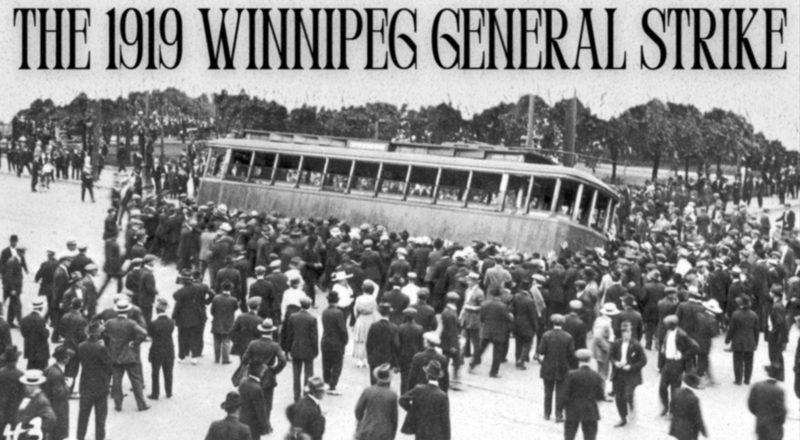
/ Blog
June 7, 2019
The 1919 Winnipeg General Strike: Specials and Strikers Riot
As 2019 marks the 100th anniversary of the 1919 Winnipeg General Strike, Heritage Winnipeg is commemorating the year by looking back at the events during this tumultuous period of history that helped shape our city. This article is part of a series of guest posts reflecting on the some of the places that bore witness to the Strike and the events leading up to it. Read all the blogs in this series from the beginning:
Walker Theatre Meeting Sets the Stage
Population Growth and the Canadian Pacific Railway Station
The Western Labour Conference in Calgary
Breaking Point – Contract Negotiations Stall
The Strike Shuts Down Winnipeg
Veterans Protest With and Against the Strike
Specials and Strikers Riot
Raids and Arrests
Bloody Saturday
Russell Sedition Trial
In response to the Strike, business people and professionals formed the Citizens’ Committee of One Thousand (CC1000), though who was involved and how many was never publicly released. Their declared purpose was to maintain the services the Strike had stopped. They arranged for trucks to deliver products or helped get owners, managers and their families to take on business duties. The CC1000 published the Winnipeg Citizen and worked behind the scenes to break the Strike. Key members of the Committee colluded with government officials to actually prolong the Strike and make it more than a labour dispute.
Virtually the entire city police force was dismissed on June 9th for refusing to sign an undertaking to limit their ability to unionize and to strike, and therefore to empathize with the strikers. The CC1000 had already started to recruit ‘Special Police’ to replace the police department. About 250 Specials were hired who were either rabid anti-strike, anti-union or who merely needed work. Their job was to supposedly keep order during the Strike, though they were not trained in policing or crowd control. Alex Jacob, an immigrant and worker who became a business man, offered a popular opinion of the Specials:
The Citizens’ Committee swore in a bunch of men as policemen, they called them special police. But actually most of them were a bunch of gangsters. … any decent man wasn’t going to join the police when the policemen are off on strike. So those that did join them were just a bunch of hoodlums, you know.
The Specials were patrolling the streets the next day and quickly demonstrated a fascist style of crowd control. People gathered at the corner of Portage Avenue and Main Street challenged and provoked two men who had been on guard at the intersection. Specials on horses came to remove the crowd. More Specials formed a barrier across the street. However, a riot broke out as the people retaliated by throwing sticks and stones. Some of the Specials suffered minor injuries. An article in the Manitoba Free Press on June 11th called the actions of the protesters “murderous assaults by riotous aliens,” and the Telegram called the protesters “enemy ruffians.” The Specials and this incident marked a turning point as the City tried to take control of the Strike. However, order was not re-established and there were signs of an approaching crisis.
THANK YOU TO THE SPONSOR OF THIS BLOG POST:

Guest post written by Dennis Lewycky.
Edited by Heritage Winnipeg.











